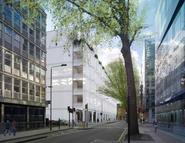John Reynolds
Wednesday 5th October 2016
Time: 4.00pm
Ground Floor Seminar Room
25 Howland Street, London, W1T 4JG
The tortoise and the hare: timescales for reinforcement mechanisms in the basal ganglia in vivo
It is widely believed that the cellular substrate for memory formation in the brain is the strengthening or weakening of synapses between neurons, so-called synaptic plasticity. In the basal ganglia, much of the published plasticity work has emanated from experiments in brain slices, where the physiological timing of afferent signals such as the phasic dopamine signal are difficult to independently emulate and control. Much of our work has involved the investigation of plasticity protocols in an in vivo model using physiological timing relationships, in order to test the theoretical predictions of systems biologists. In this presentation, I will present the results of two recently completed projects. The first investigates where signals originate that train dopamine cells to respond to classically conditioned visual stimuli. The second investigates how dopamine signals conditioned in such a way induce plasticity at synaptic inputs into the input nucleus of the basal ganglia, the striatum. In both I will show how reward at a behaviourally relevant delay is involved in the plasticity mechanism.
John Reynolds, Dept of Anatomy and the Brain Health Research Centre, University of Otago, New Zealand
 Close
Close



_RGB.jpg)